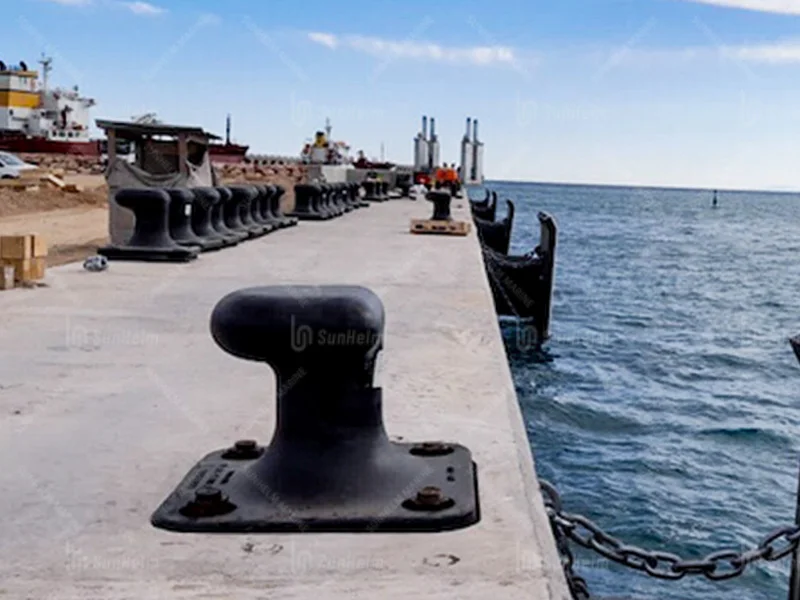A mooring bollard is a sturdy, vertical post anchored to a dock, quay, or ship deck. Its main purpose is to secure ropes or cables that keep vessels firmly in place. It prevents boats from drifting due to wind, waves, or tides.
Why is this issue necessary and urgent
First, maritime traffic is rising globally. Thus, the demand for reliable docking increases. Second, severe weather events are more frequent. As a result, mooring systems face greater stress. Finally, any failure can lead to serious consequences—accidents, property damage, or worse. For example, just last year a bollard failure caused a snap-back incident in a European port. So, now is the time to understand bollards better.







Types of mooring bollards
- Single bitt (pillar): A single post ideal for steep rope angles and variable tides. Easy to loop lines around.
- Double bitt (twin horn): Has two posts connected by a crossbar. It handles multiple lines and larger vessels.
- T-head (T-bollard): Features a horizontal bar on top. Great for high loads and varied rope angles.
- Kidney-shaped: Oval form with curved lip. Gentle on ropes, but best for mild tidal ranges.
- Cleat: A small bollard common in marinas. Supports light vessels (5–35 t).
How to choose the right bollard
Consider four key factors:
- Vessel size and load: Larger vessels and rough conditions need heavy-duty designs.
- Rope angles and line counts: Steep angles favor single bitts; multiple lines favor double bitts.
- Material: Cast iron, steel, or stainless steel offer various corrosion resistance and strength.
- Environmental conditions: High tides, wave action, and corrosion should guide your choice.
Featured Snippets
Definition: A mooring bollard is a solid vertical post used at docks or aboard ships to anchor mooring lines and keep vessels secure.
Main types: Single bitt, double bitt, T-head, kidney, and cleat—each designed for different loads and mooring scenarios.
Importance: Bollards prevent vessels from drifting or colliding. They secure docks, cargo, and crews—raising port safety and efficiency.
Keep reading if you want to…
- Learn how to inspect and maintain bollards.
- Compare installation options and costs.
- Discover best practices for anchor chain techniques.
FAQ
What is a mooring bollard made of?
They’re usually cast iron (ductile or grey), cast steel, or stainless steel. These materials balance strength, cost, and corrosion resistance.
How strong is a mooring bollard?
Load ratings range from about 5 t for small marina cleats up to several hundred tonnes for commercial port bollards.
How do you secure a line on a bollard?
Use methods like figure‑8 wraps around horns, or the “lasso” and “dipping the eye” for single posts.
Which is better: single bitt or double bitt?
Single bits are great for steep angles and simplicity. Double bitts handle more lines and heavier vessels.
Choose Sunhelm for your mooring needs
At Sunhelm, we help you select the right bollard designs, install them properly, and maintain them over time. Whether it’s a small marina or a huge container terminal, our solutions are customized for safety and reliability. Contact us to get started today!


